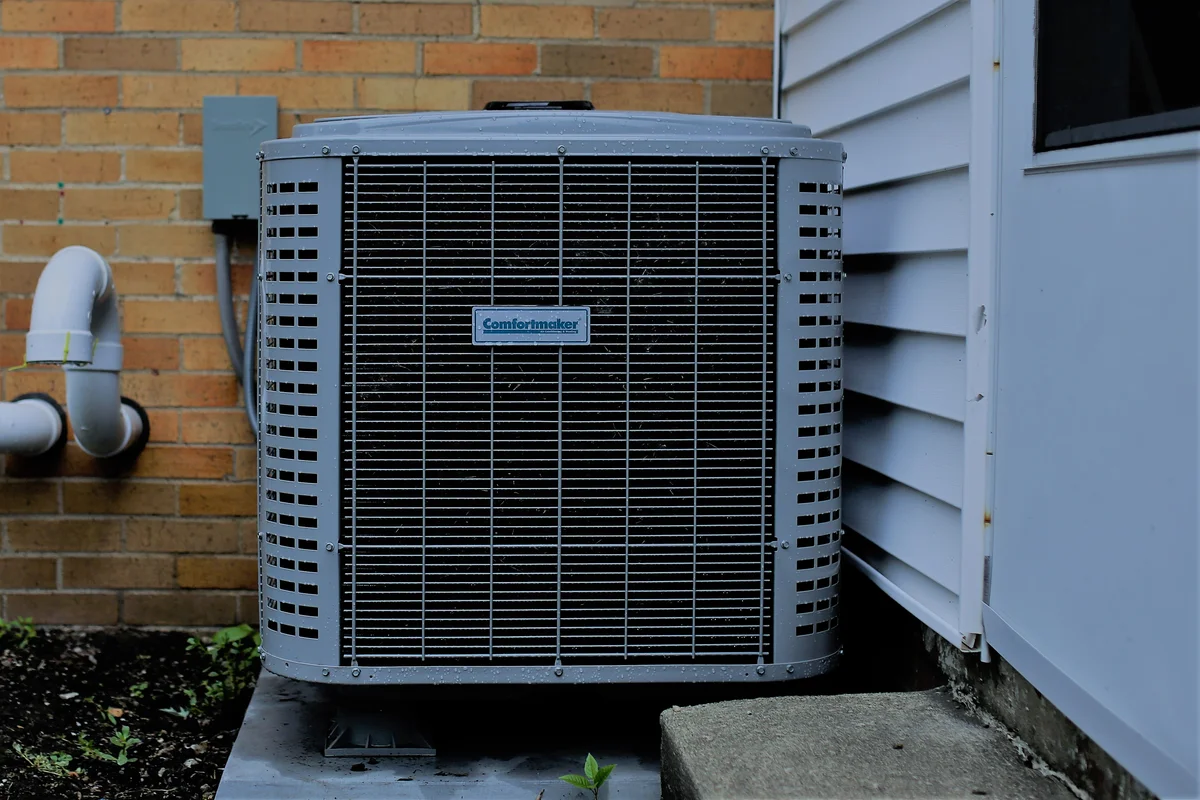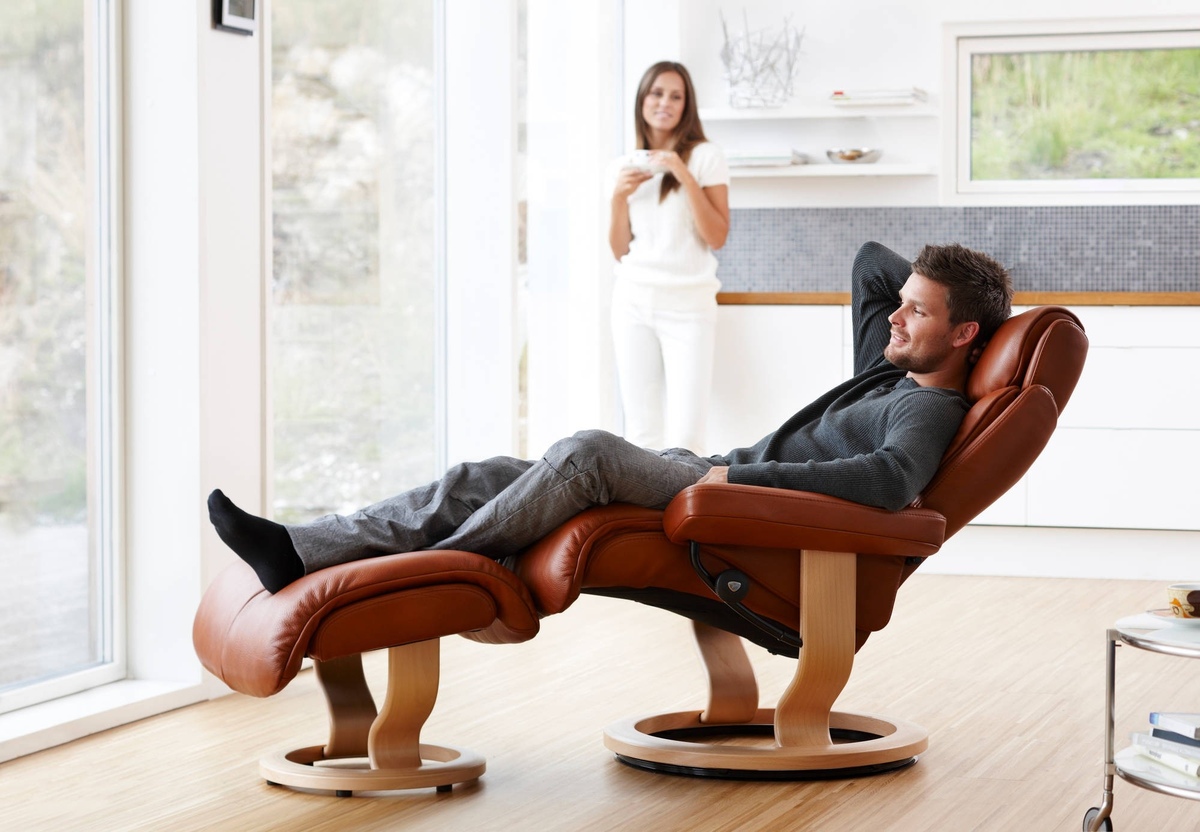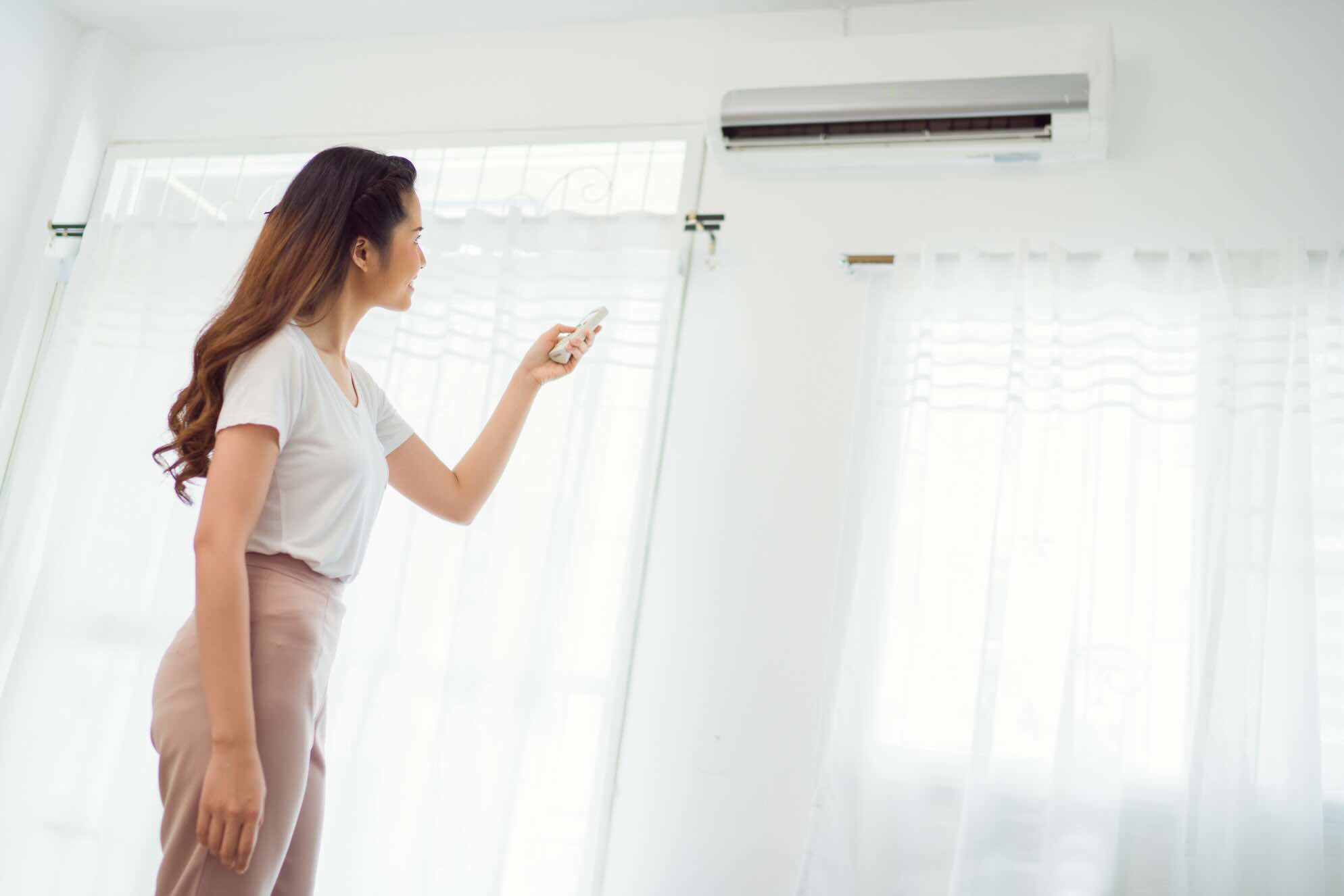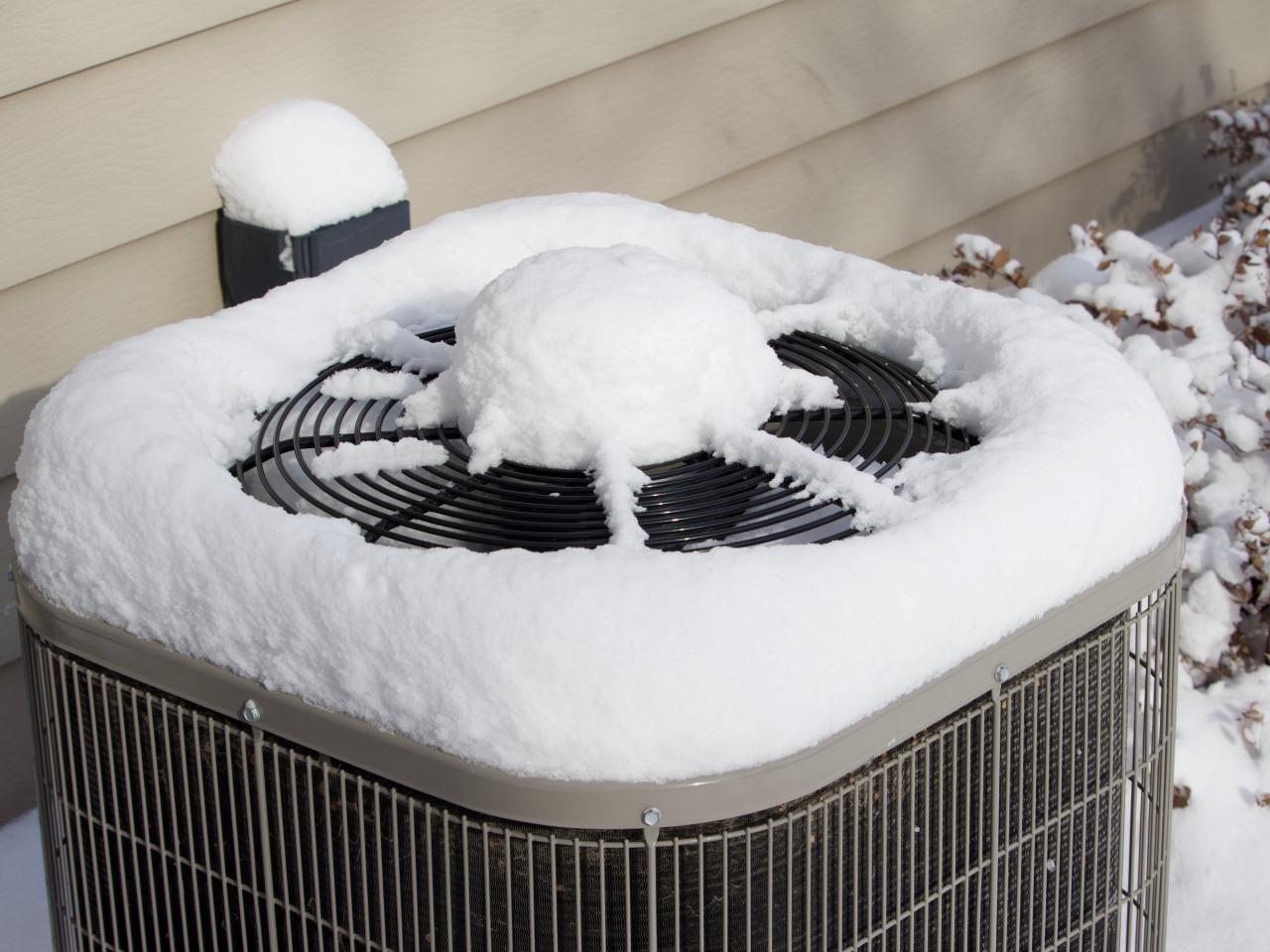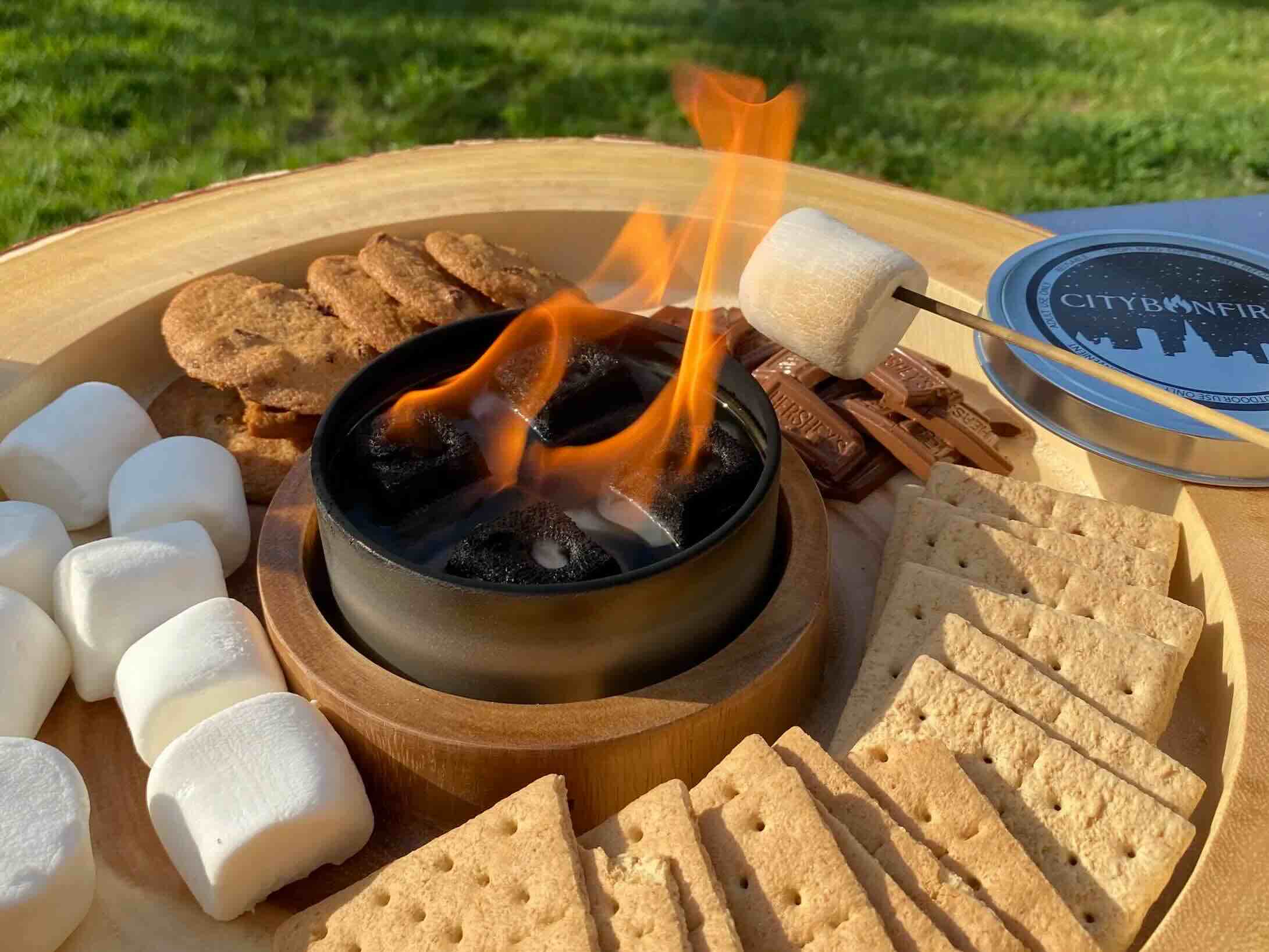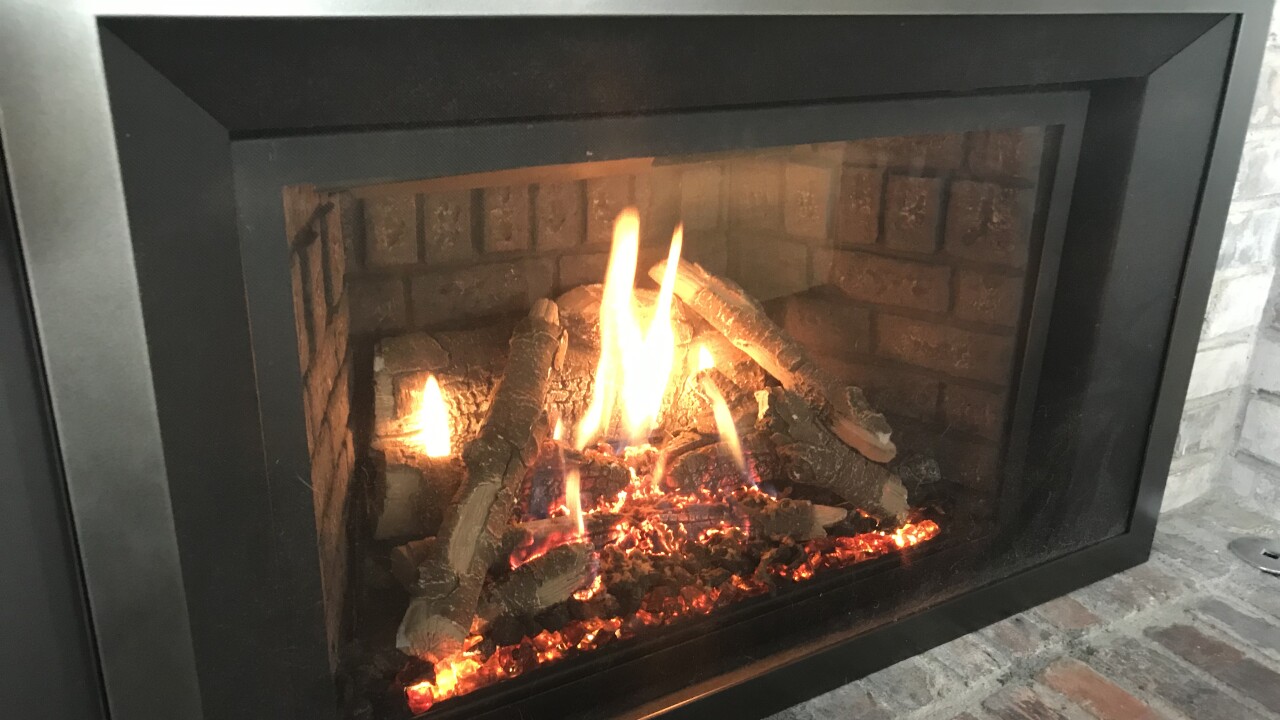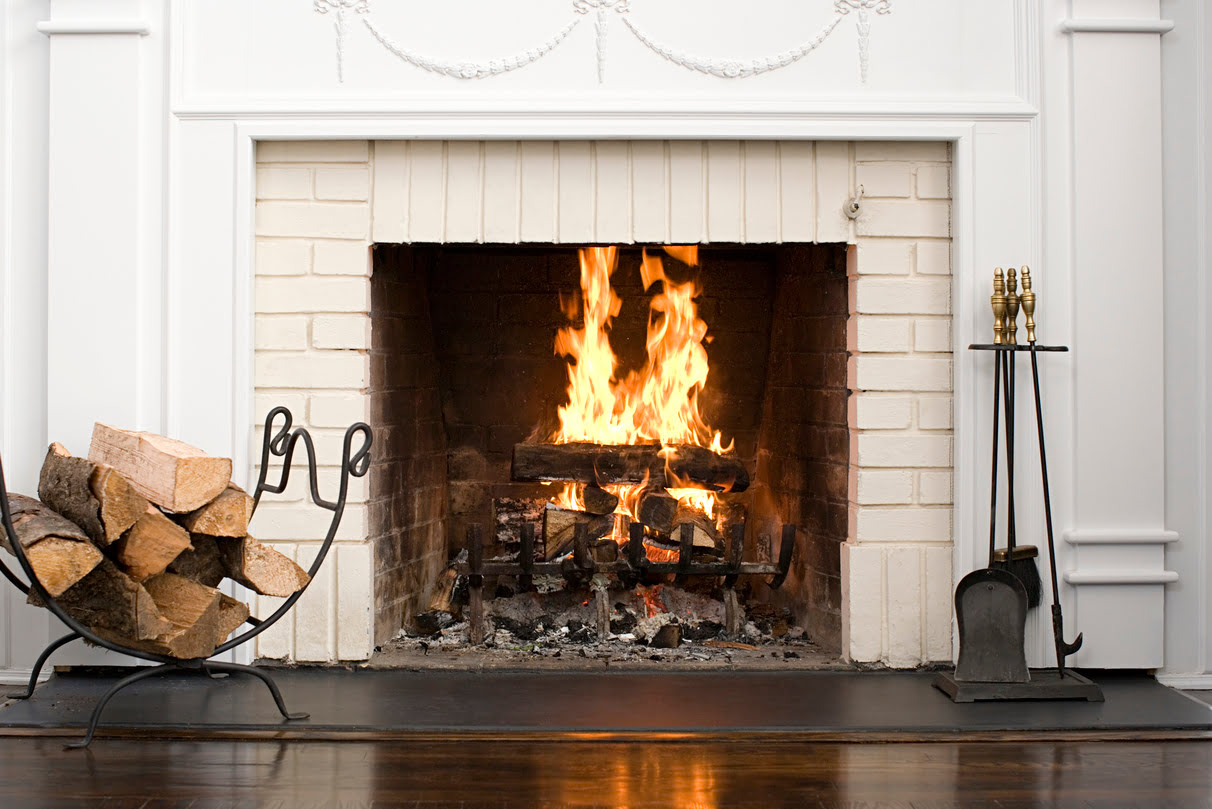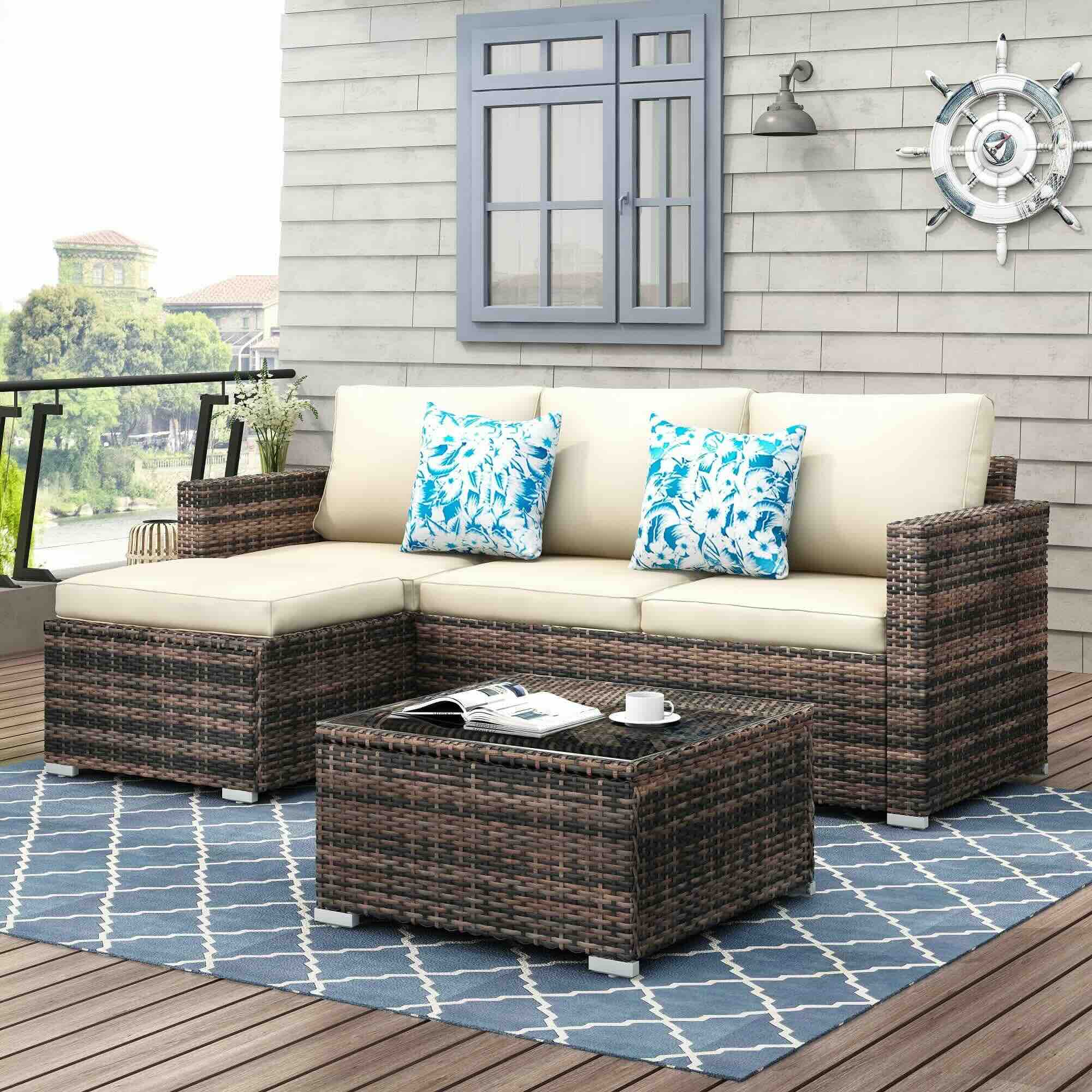Home>Home Maintenance>How To Make An Air Conditioner More Efficient
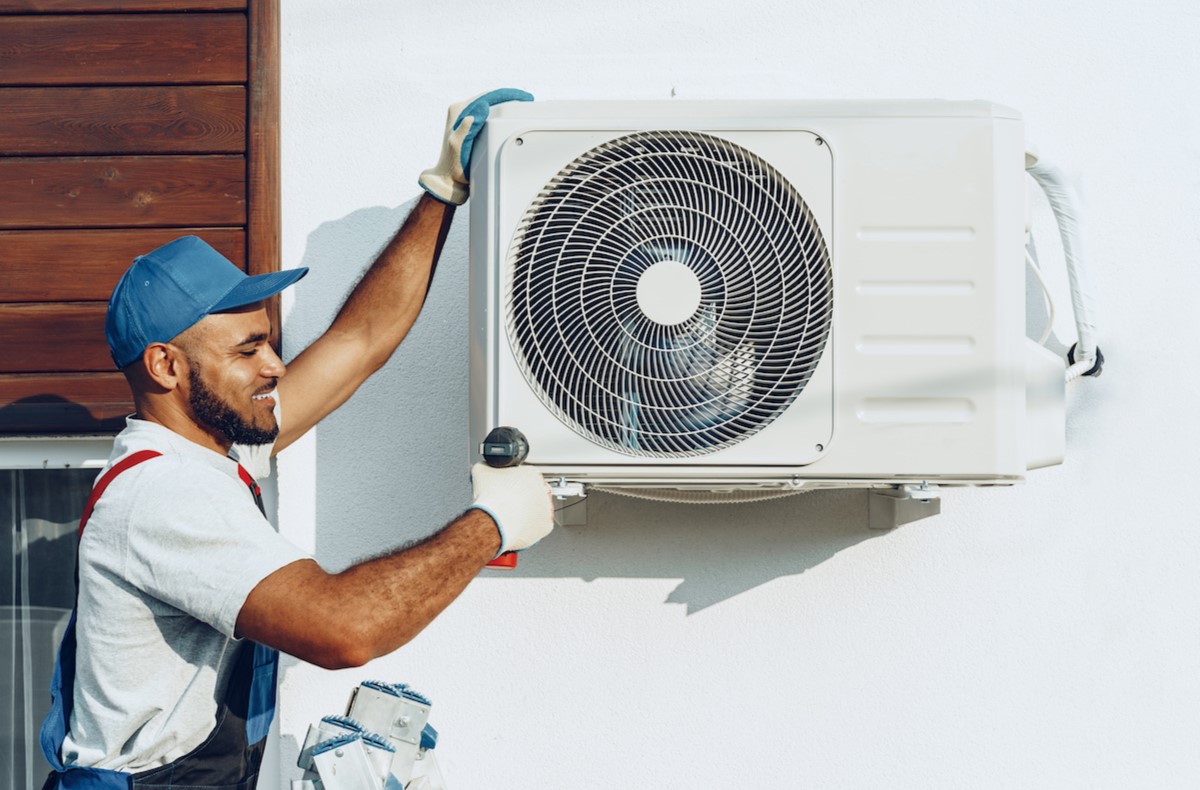

Home Maintenance
How To Make An Air Conditioner More Efficient
Modified: October 20, 2024
Discover effective tips and tricks for improving your air conditioner's efficiency and saving on energy costs with our comprehensive home maintenance guide.
(Many of the links in this article redirect to a specific reviewed product. Your purchase of these products through affiliate links helps to generate commission for Storables.com, at no extra cost. Learn more)
Introduction
Welcome to our guide on how to make an air conditioner more efficient. As the scorching summer heat arrives, it’s essential to keep our homes cool and comfortable. However, running an air conditioner can significantly increase energy consumption and utility bills. The good news is that there are several steps you can take to optimize your air conditioning system and improve its efficiency. In this article, we will explore various strategies and tips that will help you maximize the performance of your air conditioner while reducing its energy consumption.
By implementing these suggestions, you can not only save money but also contribute to environmental sustainability by reducing your carbon footprint. So, let’s dive into the world of air conditioner efficiency optimization and discover how simple changes can result in significant energy savings.
Key Takeaways:
- Keep your air conditioner efficient by cleaning and maintaining it regularly. This helps it run smoothly, saves money, and reduces environmental impact.
- Upgrade to a high-efficiency air filter and use a programmable thermostat to improve your air conditioner’s performance while saving energy and money.
Read more: How To Make Air Conditioning More Efficient
Clean and Maintain the Air Conditioner Regularly
One of the most important steps in improving the efficiency of your air conditioner is to keep it clean and properly maintained. Over time, dust, dirt, and debris can accumulate on the evaporator coil and condenser unit, hindering airflow and reducing efficiency. Here are some key maintenance tasks you should perform:
- Clean or replace the air filter: A dirty air filter restricts airflow, making your air conditioner work harder to cool your home. Check the filter every month and clean it if it’s washable, or replace it if it’s disposable.
- Clean the evaporator coil: The evaporator coil is located inside the air handler unit. Over time, it can accumulate dust and grime, reducing its efficiency. Use a soft brush or a vacuum cleaner with a brush attachment to gently clean the coil. Be careful not to bend or damage the delicate fins.
- Clean the condenser unit: The condenser unit is located outside and can become dirty from leaves, grass, and debris. Regularly clean the condenser coil using a hose or soft brush to remove any obstructions that could impede airflow.
- Check and clean the condensate drain line: The condensate drain line removes moisture from the air conditioner. If it becomes clogged, it can cause water leakage. Inspect the drain line for clogs and use a mixture of bleach and water to clean it if necessary.
- Inspect and tighten electrical connections: Ensure that all electrical connections are secure and free from corrosion. Loose connections can lead to electrical problems and reduce the efficiency of your air conditioner.
Performing these maintenance tasks on a regular basis not only keeps your air conditioner running efficiently but also extends its lifespan. It is recommended to have a professional HVAC technician service your air conditioner at least once a year to perform a more thorough inspection and maintenance.
Upgrade to a High-Efficiency Air Filter
Another effective way to improve the efficiency of your air conditioner is by upgrading to a high-efficiency air filter. Standard air filters are designed to capture large particles such as dust and debris, but they may not be as effective at filtering out smaller particles that can affect indoor air quality and the performance of your HVAC system.
High-efficiency air filters, also known as HEPA filters (High-Efficiency Particulate Air filters), are capable of trapping smaller particles such as pollen, pet dander, and even some bacteria and viruses. By capturing these particles, HEPA filters not only improve the air quality in your home but also prevent them from clogging the air conditioning system, allowing for better airflow and increased efficiency.
When choosing a high-efficiency air filter, it’s important to consider its MERV rating (Minimum Efficiency Reporting Value). This rating ranges from 1 to 20, with a higher value indicating better filtration. However, it’s crucial to check your air conditioner’s specifications and consult with an HVAC professional to ensure that the system can handle the increased airflow resistance that comes with a higher MERV rating.
Keep in mind that high-efficiency air filters generally need to be replaced more frequently than standard filters because they trap more particles. It’s recommended to check the manufacturer’s guidelines for your specific filter and replace it accordingly.
Upgrading to a high-efficiency air filter not only enhances the performance and efficiency of your air conditioner but also provides cleaner and healthier indoor air for you and your family. Improved indoor air quality can help alleviate respiratory issues and allergies, making your home a more comfortable and pleasant environment to be in.
Use a Programmable Thermostat
One of the simplest and most effective ways to improve the efficiency of your air conditioner is by using a programmable thermostat. Traditional thermostats require manual adjustments, which can result in unnecessary cooling when you’re away or asleep, leading to higher energy consumption.
A programmable thermostat allows you to set different temperature preferences for various times of the day or week, ensuring that your air conditioner is only running when needed. For example, you can program the thermostat to decrease the temperature during the hours when you’re usually at home and awake, and then increase it when you’re asleep or away.
By optimizing the temperature settings through a programmable thermostat, you can reduce energy waste and save money on your utility bills. According to the U.S. Department of Energy, you can save up to 10% a year on heating and cooling costs by simply adjusting your thermostat by 7-10 degrees Fahrenheit for 8 hours a day.
Modern programmable thermostats also come with additional features and connectivity options. Some models can be controlled remotely using a smartphone app, allowing you to adjust the temperature settings even when you’re not at home. Others can learn your temperature preferences over time and make automatic adjustments to maximize comfort and energy savings.
When installing a programmable thermostat, place it in a central location away from direct sunlight, drafts, or heat-producing appliances. This will ensure accurate temperature readings and proper functioning of the thermostat.
Using a programmable thermostat not only improves the efficiency of your air conditioner but also gives you more control over your home’s temperature and energy consumption. It’s an investment that pays off in both comfort and savings.
Seal and Insulate Your Home
Proper sealing and insulation of your home can have a significant impact on the efficiency of your air conditioner. Gaps, cracks, and poorly insulated areas allow cool air to escape and hot air to enter, making your air conditioner work harder to maintain a comfortable temperature. By sealing air leaks and improving insulation, you can prevent energy loss and improve the overall efficiency of your cooling system.
Here are some steps you can take to seal and insulate your home:
- Seal air leaks: Inspect your home for gaps and cracks around windows, doors, and utility openings. Use weatherstripping, caulking, or spray foam insulation to seal these areas and prevent air infiltration.
- Insulate the attic: The attic is a prime area for heat transfer. Ensure that it is properly insulated with insulation batts, blown-in insulation, or spray foam insulation. Adequate insulation in the attic can reduce the amount of heat that enters your home, keeping it cooler and reducing the workload on your air conditioner.
- Insulate walls and floors: In addition to the attic, consider insulating the walls and floors of your home. This can help maintain a more stable indoor temperature and reduce the need for excessive air conditioning.
- Seal ductwork: Leaky ducts can result in cooled air escaping into unconditioned areas of your home. Inspect your ductwork and seal any leaks with duct sealant or aluminum foil tape. Properly sealed ducts ensure that the cool air reaches its intended destination efficiently.
- Install energy-efficient windows: If your windows are old and inefficient, consider upgrading to energy-efficient windows. These windows are designed to minimize heat transfer, keeping the hot air out and the cool air in.
Sealing and insulating your home not only improves the efficiency of your air conditioner but also enhances overall energy efficiency. It helps maintain a more comfortable indoor environment and reduces the strain on your cooling system, leading to lower energy bills and a greener footprint.
Read more: How To Make An Air Mattress More Comfortable
Utilize Ceiling Fans
When it comes to improving air conditioner efficiency and keeping your home cool, don’t underestimate the power of ceiling fans. Ceiling fans are a cost-effective and energy-efficient way to enhance comfort by circulating air and creating a gentle breeze.
Here’s how you can utilize ceiling fans effectively:
- Set the fan direction correctly: In the summer, make sure your ceiling fan is set to rotate counterclockwise. This creates a downward airflow that helps to create a cooling effect by evaporating moisture from your skin. It can make you feel up to 4 degrees Fahrenheit cooler without lowering the actual room temperature.
- Use ceiling fans in conjunction with the air conditioner: Running a ceiling fan in combination with your air conditioner allows you to raise the thermostat setting by a few degrees without sacrificing comfort. The fan’s breeze makes you feel cooler, reducing the need to solely rely on the air conditioner to maintain a comfortable temperature.
- Turn off the fan when not in use: Remember to turn off the ceiling fans when you leave a room. Fans cool people, not spaces. By turning them off, you’ll save energy and reduce electricity consumption.
- Invest in energy-efficient ceiling fans: When purchasing a ceiling fan, look for models with the Energy Star label. These fans are designed to meet strict energy efficiency guidelines and can save you up to 20% on cooling costs compared to standard models.
Ceiling fans are a great addition to any home as they provide a cost-effective solution to stay cool during the summer months. By using ceiling fans strategically, you can reduce your reliance on the air conditioner, save energy, and lower your utility bills.
Clean or replace the air filter regularly to improve airflow and efficiency. A dirty filter can restrict airflow and make the system work harder, using more energy.
Close Curtains and Blinds during the Day
One often overlooked but effective strategy to improve the efficiency of your air conditioner is to close curtains and blinds during the day. By blocking out sunlight and heat, you can reduce the amount of radiant heat that enters your home, thus lowering the workload on your cooling system.
Here are some tips for effectively utilizing curtains and blinds:
- Use light-colored curtains or blinds: Light colors reflect sunlight better than dark colors, helping to keep your home cooler. Opt for light-colored curtains or blinds to minimize heat absorption.
- Close curtains and blinds on windows that receive direct sunlight: Identify the windows in your home that receive the most direct sunlight during the day. Close the curtains or blinds on these windows to block out the heat and keep your home cooler.
- Consider using blackout curtains: If you have windows in rooms where you want to block out the most sunlight, such as your bedroom or home office, consider installing blackout curtains. These curtains are specially designed to block out nearly all light, providing optimal shading and heat reduction.
- Close curtains and blinds on hot days: On exceptionally hot days, even windows that don’t receive direct sunlight can let in radiant heat. Closing the curtains or blinds in all rooms can prevent heat from entering your home, keeping it cooler and reducing the need for constant air conditioning.
By closing curtains and blinds during the day, you can create a barrier against heat and sunlight, helping to maintain a more comfortable indoor temperature. Your air conditioner won’t have to work as hard to cool your home, resulting in energy savings and lower electricity bills.
Keep Heat-Producing Appliances Away from the Thermostat
Did you know that the location of your thermostat can greatly affect the efficiency of your air conditioner? Placing heat-producing appliances near the thermostat can trick it into thinking your home is warmer than it actually is, which can lead to the air conditioner running longer and consuming more energy than necessary. To optimize the performance of your cooling system, it’s important to keep heat-generating appliances away from the thermostat.
Here are some common appliances that generate heat and should be kept away from the thermostat:
- Televisions: TVs, especially older plasma or CRT models, can emit a significant amount of heat. Avoid placing your TV directly beneath or near the thermostat to prevent it from affecting temperature readings.
- Lamps: Incandescent bulbs produce both light and heat. If you have a lamp near your thermostat, the heat generated can falsely inflate the temperature reading and cause your air conditioner to run longer than necessary.
- Computers and electronic devices: Computers, laptops, game consoles, and other electronic devices generate heat when in use. Keep them away from the thermostat to prevent any interference with temperature readings.
- Kitchen appliances: Appliances such as ovens, stoves, and toasters produce significant amounts of heat. It’s important to avoid placing your thermostat in the kitchen or near these appliances to ensure accurate temperature control.
- Direct sunlight: Sunlight streaming in through windows can also affect the accuracy of temperature readings at the thermostat. Install blinds or curtains to block out direct sunlight and prevent it from influencing the thermostat’s measurements.
By keeping these heat-producing appliances away from the thermostat, you can ensure accurate temperature readings and prevent unnecessary cooling. This allows your air conditioner to run more efficiently and maintain a comfortable indoor environment while consuming less energy.
Optimize Airflow with Proper Ventilation
Proper ventilation plays a crucial role in optimizing the airflow in your home and improving the efficiency of your air conditioner. Good airflow not only helps distribute cool air efficiently but also prevents stagnant air and improves indoor air quality. Here are some tips to optimize airflow and enhance the performance of your cooling system:
- Keep vents and registers clear: Ensure that vents and registers throughout your home are not blocked by furniture, rugs, or other objects. Blocked vents restrict the flow of cool air, causing your air conditioner to work harder to maintain the desired temperature.
- Clean air vents and ducts: Over time, dust and debris can accumulate in air vents and ducts, obstructing airflow. Regularly clean the vents and have your ductwork professionally cleaned to improve air circulation and ensure efficient cooling.
- Open interior doors: To allow for proper airflow, keep interior doors open to allow cool air to circulate freely throughout your home. By creating a well-connected airflow path, you can maximize the effectiveness of your air conditioner.
- Install ceiling fans: In addition to using ceiling fans to create a cooling breeze, they also help to improve airflow. The circulating air from ceiling fans prevents stagnant air pockets and helps distribute cool air evenly throughout the room.
- Consider adding a ventilation system: If your home lacks proper natural ventilation, you may want to consider installing a whole-house ventilation system. These systems help remove stale air and bring in fresh outdoor air, improving air quality and maintaining a comfortable environment.
By optimizing airflow through proper ventilation, you can enhance the performance of your air conditioner, improve indoor air quality, and create a more comfortable living environment. It allows your cooling system to operate more efficiently and reduces the strain on the equipment, ultimately leading to energy savings and lower utility bills.
Read more: How To Make A Pool Ladder More Sturdy
Consider Installing a Ductless Mini-Split System
If you’re looking for a highly efficient cooling solution that offers flexibility and zoning capabilities, consider installing a ductless mini-split system. Unlike traditional central air conditioning systems that rely on ductwork, ductless mini-splits offer a compact and versatile alternative for cooling individual rooms or zones within your home.
Here are some benefits of a ductless mini-split system:
- Energy efficiency: Ductless mini-splits are highly energy-efficient compared to central air conditioning systems. With no ductwork to contend with, you’ll avoid the energy losses associated with duct leaks and poor insulation, resulting in reduced energy consumption and lower utility bills.
- Zoning capabilities: Ductless mini-split systems allow for individual temperature control in each room or zone. This zoning capability allows you to cool only the rooms that are occupied, saving energy by avoiding the need to cool the entire house when only a few rooms are in use.
- Flexible installation: Since ductless mini-split systems do not require ductwork, they can be installed in virtually any room or area in your home. They are ideal for homes without existing ducts or for room additions and renovations where extending ductwork is not feasible.
- Improved indoor air quality: Ductless mini-splits include advanced filtration systems that help remove dust, allergens, and other contaminants from the air. This can greatly improve indoor air quality, creating a healthier and more comfortable living environment.
- Silent operation: Ductless mini-split systems are known for their quiet operation. The noise generated by the compressor is located outside, while the indoor units operate quietly, allowing you to enjoy a peaceful and undisturbed environment.
When considering a ductless mini-split system, it’s recommended to consult with a professional HVAC technician who can assess your home’s specific needs and provide guidance on the most suitable system size and configuration.
By installing a ductless mini-split system, you can enjoy efficient and customizable cooling, improved indoor air quality, and enhanced comfort in your home.
Conclusion
Improving the efficiency of your air conditioner not only saves you money on energy bills but also contributes to a more sustainable and eco-friendly lifestyle. By implementing the strategies and tips outlined in this article, you can maximize the performance of your cooling system while reducing energy waste and environmental impact.
Regularly cleaning and maintaining your air conditioner, upgrading to a high-efficiency air filter, and using a programmable thermostat are fundamental steps towards enhancing efficiency. Sealing and insulating your home, utilizing ceiling fans, and closing curtains and blinds during the day further optimize cooling efforts and minimize energy consumption.
Additionally, keeping heat-producing appliances away from the thermostat, optimizing airflow with proper ventilation, and considering the installation of a ductless mini-split system can provide significant enhancements to your cooling system’s efficiency.
Incorporating these practices into your home maintenance routine will help you create a comfortable living space, save on energy costs, and reduce your carbon footprint. Remember to consult with professionals for guidance and assistance when necessary, particularly for tasks like HVAC system maintenance and installation.
By taking proactive steps to make your air conditioner more efficient, you not only increase the lifespan and performance of your cooling system but also contribute to a more sustainable and comfortable future for both yourself and the environment.
Frequently Asked Questions about How To Make An Air Conditioner More Efficient
Was this page helpful?
At Storables.com, we guarantee accurate and reliable information. Our content, validated by Expert Board Contributors, is crafted following stringent Editorial Policies. We're committed to providing you with well-researched, expert-backed insights for all your informational needs.
